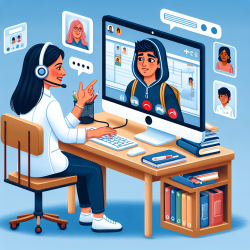Understanding the Virtual Therapy Landscape
In the ever-evolving landscape of educational support, school social workers often find themselves feeling lost amidst the myriad of challenges they face. One of the most significant challenges is ensuring that students with speech and language difficulties receive the support they need. Virtual therapy, particularly online speech therapy, offers a compelling solution to bridge this gap effectively.
The Need for a Next Step
School social workers play a crucial role in advocating for and facilitating the mental and emotional well-being of students. However, when it comes to addressing speech and language disorders, particularly in children with autism, traditional methods may not always suffice. The need for a data-driven, flexible, and accessible approach has never been more apparent.
Benefits of Online Speech Therapy
Online speech therapy is not just a digital trend; it is a proven, evidence-based approach that offers several advantages:
- Accessibility: Students can receive therapy from the comfort of their home or school, eliminating geographical barriers.
- Consistency: Regular sessions are more feasible, which is crucial for progress, especially for children with autism.
- Customization: Therapy can be tailored to meet the specific needs of each student, leveraging data to drive decisions and outcomes.
- Collaboration: Online platforms facilitate seamless communication between therapists, educators, and parents, ensuring a cohesive support system.
Data-Driven Decisions for Better Outcomes
Data is at the heart of effective online speech therapy. By leveraging data analytics, therapists can track progress, adjust strategies, and ensure that interventions are working. This data-driven approach empowers school social workers to make informed decisions, ensuring that every child receives the most effective support possible.
Case Studies: Success Stories
Consider the story of a young student with autism who struggled with traditional speech therapy sessions due to anxiety and transportation issues. By transitioning to online speech therapy, the student not only received consistent support but also thrived in a familiar environment, leading to significant improvements in communication skills.
Taking the Next Step
As a school social worker, you have the power to initiate change. By integrating virtual therapy solutions like those offered by TinyEYE, you can enhance the support network for your students, ensuring they receive the comprehensive care they deserve. The next step is to explore these options, assess their potential impact, and advocate for their implementation within your school or district.
Conclusion
In the face of feeling lost amidst the complexities of student support, virtual therapy emerges as a beacon of hope. By embracing this innovative approach, school social workers can navigate these challenges with confidence, ensuring that every child, regardless of their circumstances, has the opportunity to succeed.










